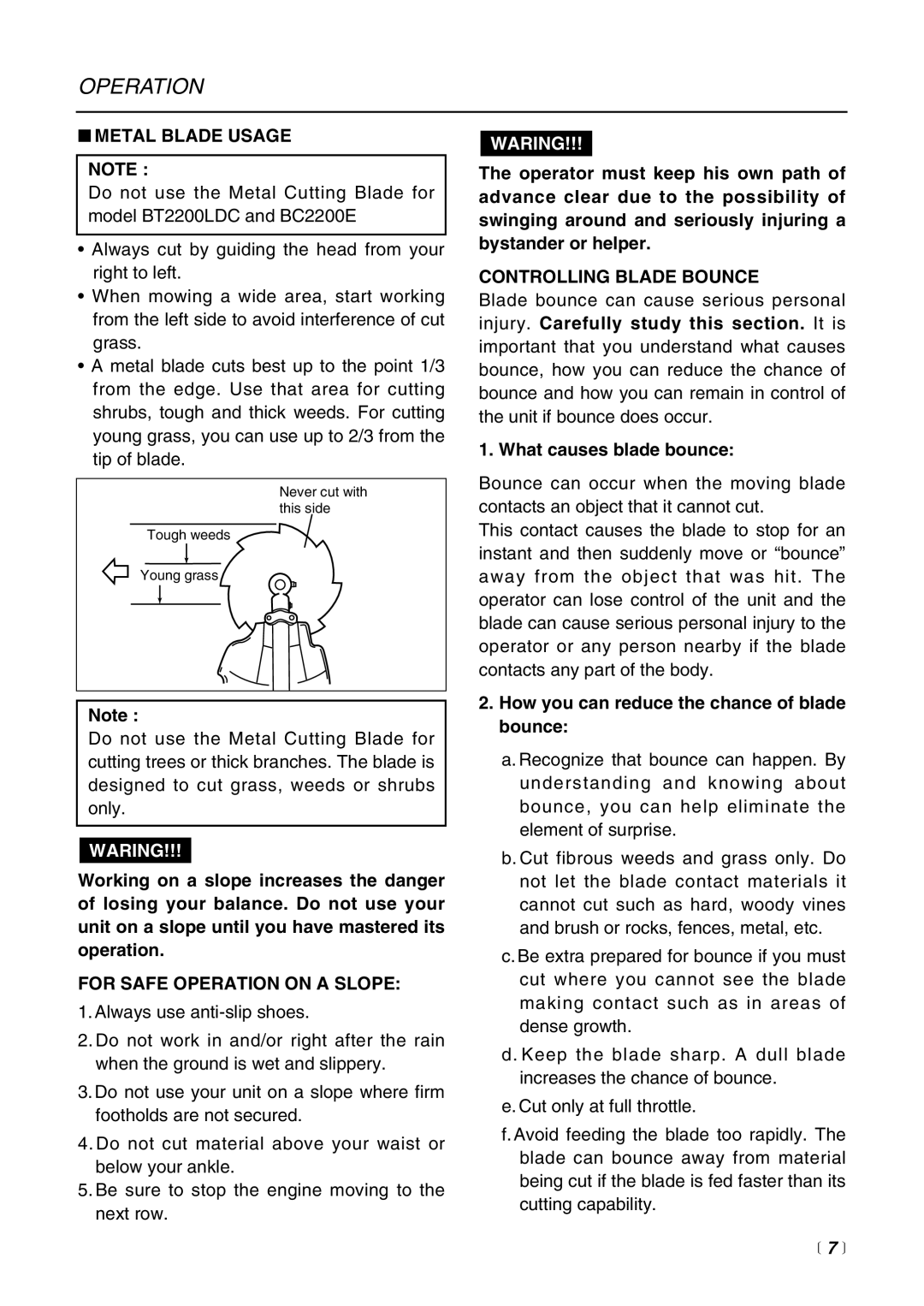BC2200LDC, BT2200LDC, BC2200E, HE2200LDC specifications
RedMax, a recognized leader in outdoor power equipment, offers a variety of innovative tools designed for both professional landscapers and homeowners. Among its standout offerings are the HE2200LDC, BC2200E, BT2200LDC, and BC2200LDC models, each equipped with impressive features and technologies to meet diverse landscaping needs.The RedMax HE2200LDC is a high-performance hedge trimmer that stands out with its long reach and lightweight design. It is equipped with a powerful 21.7 cc engine that ensures efficient cutting while minimizing operator fatigue. The dual-action blades provide a smooth and precise cut, making it ideal for shaping and maintaining hedges. Additionally, the HE2200LDC features a 180-degree rotating rear handle, which enhances maneuverability and comfort when trimming in various positions.
The BC2200E is an exceptional brush cutter that demonstrates RedMax's commitment to power and durability. Featuring a robust 21.7 cc engine, it delivers remarkable cutting performance. The ergonomic design includes a harness and anti-vibration technology, which allows for extended use without discomfort. The BC2200E is compatible with a variety of cutting attachments, making it versatile for tackling tough brush, weeds, and overgrowth.
Another impressive model is the BT2200LDC, a powerful pole saw designed for reaching high branches and tricky areas. This model is equipped with a strong, efficient engine and a high-quality cutting bar, enabling users to make clean cuts at heights up to 12 feet. The lightweight and well-balanced design ensures that users can operate the saw with ease and precision. Its easy starting system allows users to get to work quickly and efficiently.
Finally, the BC2200LDC is a line trimmer that combines performance with user-friendly features. This model boasts a robust 21.7 cc engine and a bump feed line head, allowing for quick line advancement during operation. The low vibration system enhances comfort, making it easier to use for extended periods. Its durable construction ensures that it can withstand the rigors of frequent use in various environments.
In summary, RedMax’s HE2200LDC, BC2200E, BT2200LDC, and BC2200LDC models offer a range of features and technologies aimed at enhancing productivity and ease of use. With powerful engines, ergonomic designs, and versatile options, these tools are well-suited for both professional landscapers and gardening enthusiasts alike, setting a standard for performance and reliability in outdoor power equipment.

